February 26, 2019
Archipelagos Galápagos!
Hi folks!
As promised, herewith, more tales from equatorial-Ecuadorial…
After several days of our habitually lowland-residing organisms struggling to cope with the extreme altitudes of the Ecuadorian highlands, plus a wholly unusual seeing in of the New Year, our willy-nilly-wonky route returned us back to sea level and to the Galápagos Islands. Oh yes. Here:
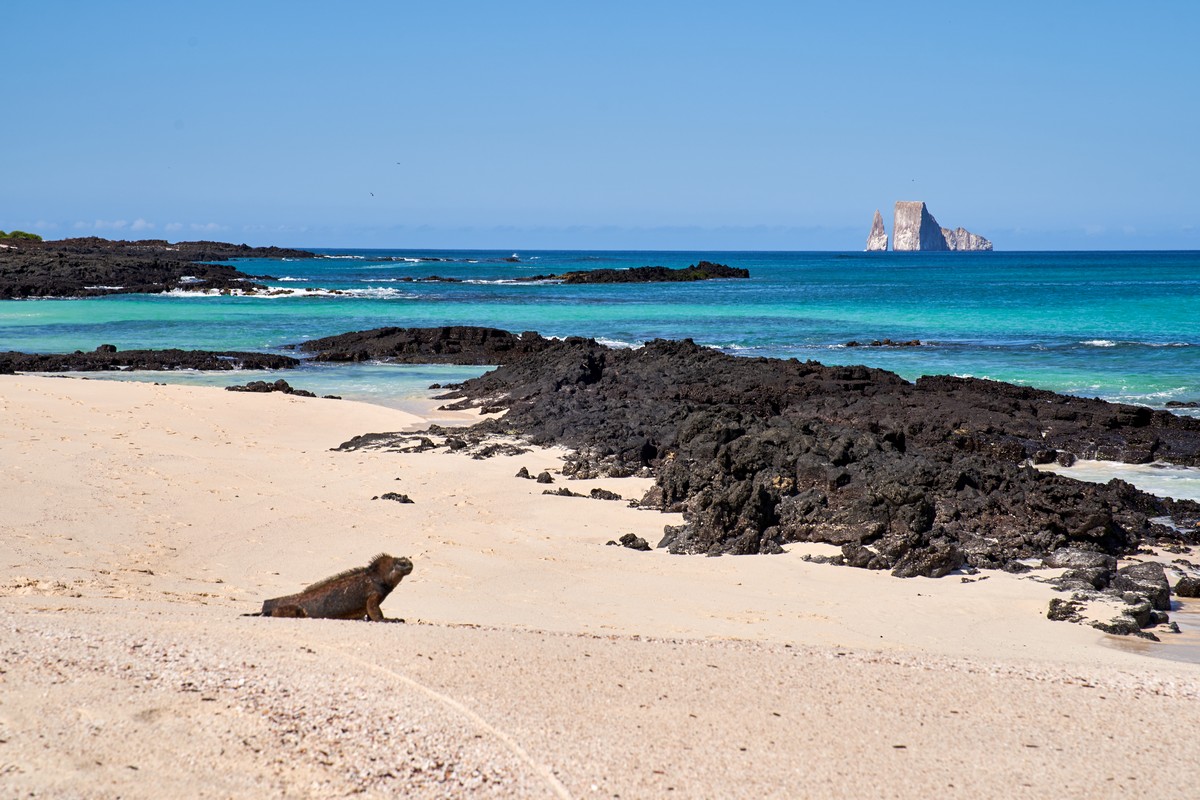
But first, we had to get there – on a short flight.
On the way to the airport we noticed some intriguing kunst in the middle of a roundabout:
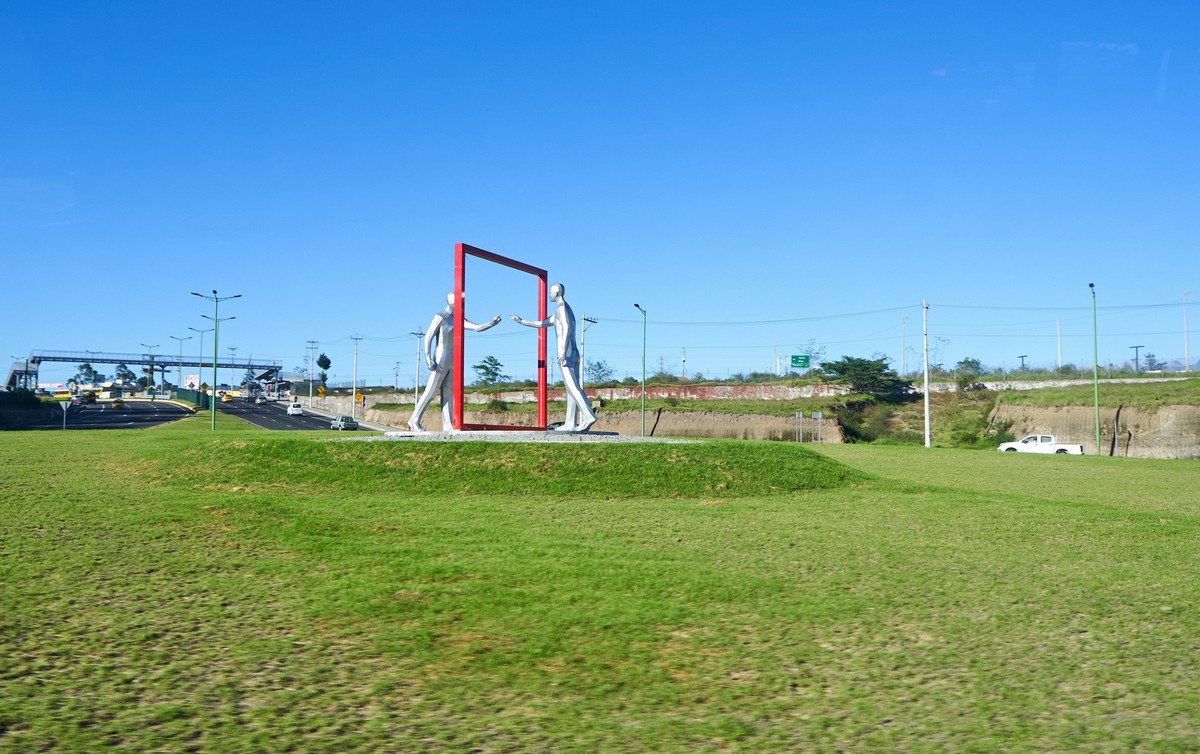
Up in the sky, the fairly perfect cone of the Cotopaxi volcano (~5900m) came into view:
Quick digression here folks…
Now, as a big fan of science fiction, of course I’ve read plenty of Kurt Vonnegut’s works – starting while still at school. But for some reason his eleventh novel – the mega-anti-utopian Galápagos – passed me by. I made up for that in 2017, finally procuring a copy and getting through it on airplanes. Highly imaginative, rather disturbing, excellent too. Anyway, a part of the book is set in the Ecuadorian city of Guayaquil. And I was just really curious to go have a look at the place. So we did!
Nearer downtown:
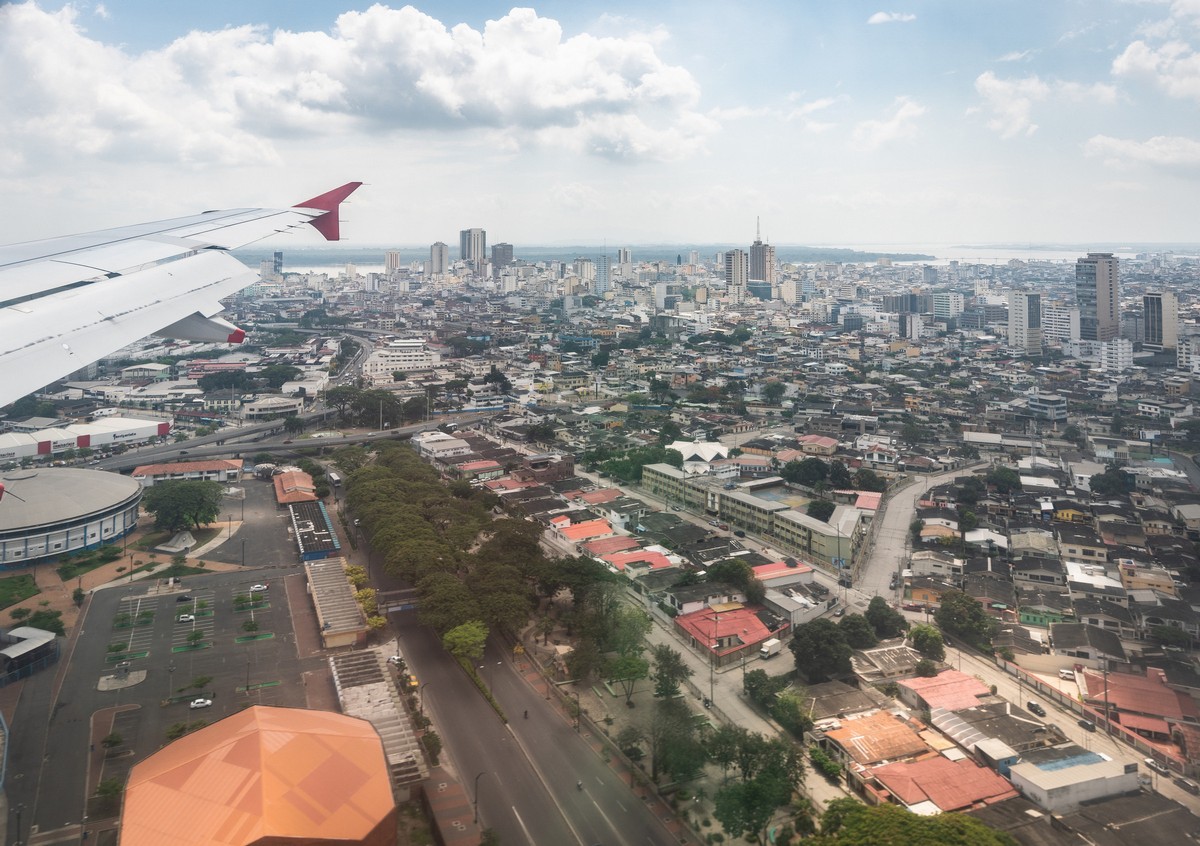
All the local flights we took during this trip made a stop here in Guayaquil. Flying in, first you see the less salubrious suburbs; then things go upmarket…
Off we pop; next stop, the Galápagos Islands!
The islands are a relative stone’s throw from the mainland. We’d hardly lifted off before we were descending again…
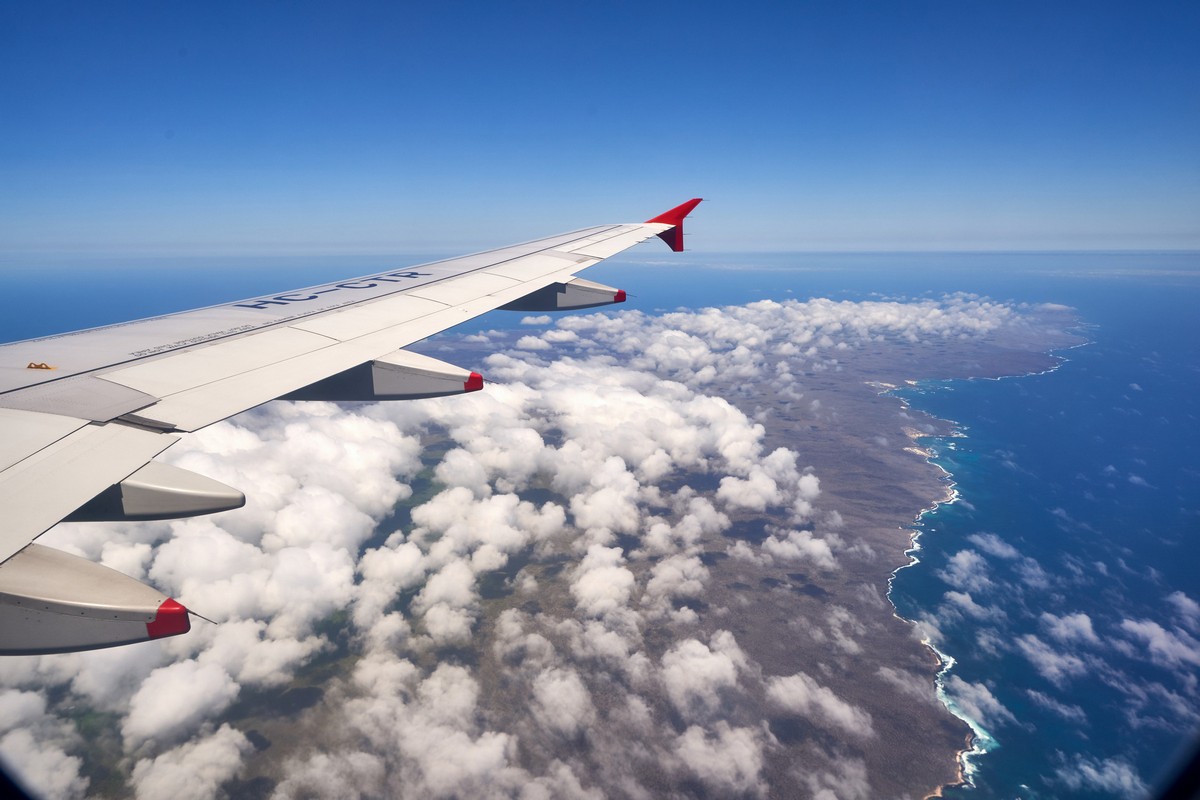
We flew into the airport on San Cristóbal Island, which, incidentally, is the island Charles Darwin landed at nearly 200 years ago, in 1835.
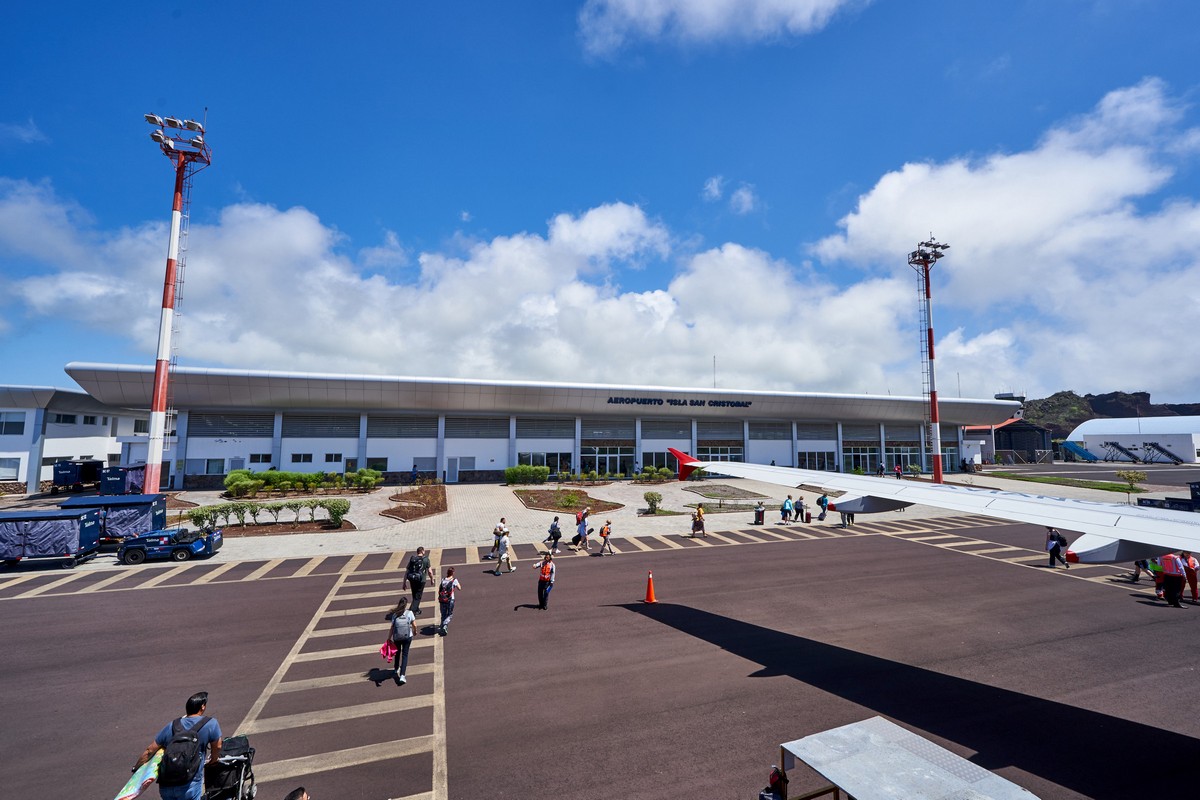
Upon arrival we had to register ourselves (a special form needs filling out beforehand), and go through some rigorous baggage checking to make sure we weren’t bringing in anything banned – deemed harmful for the island’s protected ecosystem (if we’d had animals we’d have been fined heavily – and jailed!). After a short bus ride we were already in the center of town by the sea. Here we got a first glimpse at some exotic wild animals:
Seals, bright orange crabs, iguanas – lots of. Accordingly, lots of pics were taken during our first minutes on the island…
Those minutes never became hours as we had a boat to catch. We took a dinghy out to it – the place that would be our home away from home land for the coming week:
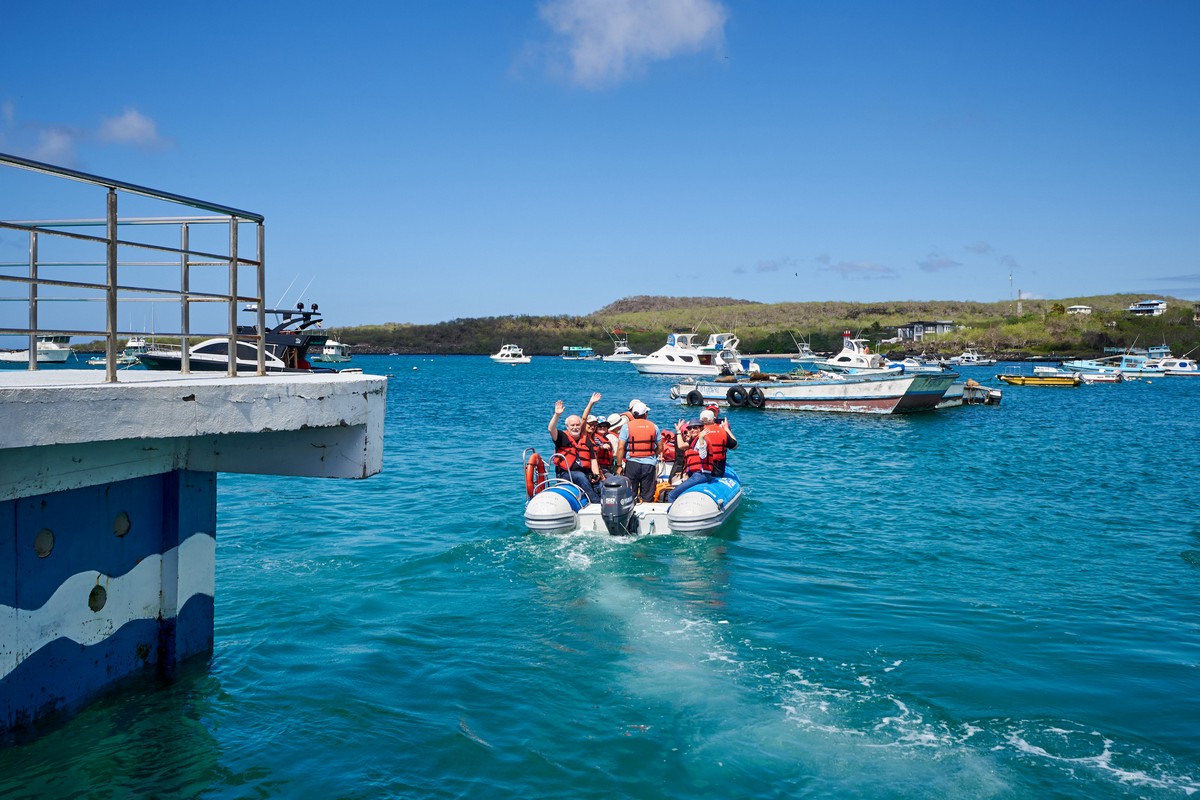
After briefly looking around our new digs, unpacking and catching our breath, we were back onto the island for a stroll around the park to stretch the legs, get used to the local climate, and meet our guides who’d be with us for the week. We also got first taste of Ecuad-awesomeness! Yes, this is the phenomenon we soon got used to every day on this trip: every single day there was at least one enormous Ecuad-awesomeness, plus several smaller ones. But more on those later – indeed, I’ll be writing about and showing you pics of plenty of them in upcoming posts…
For now, let me tell you about two warm-up Ecuad-awesomenesses we encountered during our first day on the Galápagos. The first: cactuses. They’re colossal here! And in all sorts of shapes (animal-resembling – even Mickey Mouse-resembling!), sometimes growing up out of some kinda palms. In short, Ecuad-awesome!
The second warm-up Ecuad-awesomeness: the age of these here volcanic rocks (old lava fields). A hundred years old maybe? Several hundred? Actually, around a million, according to our guides!
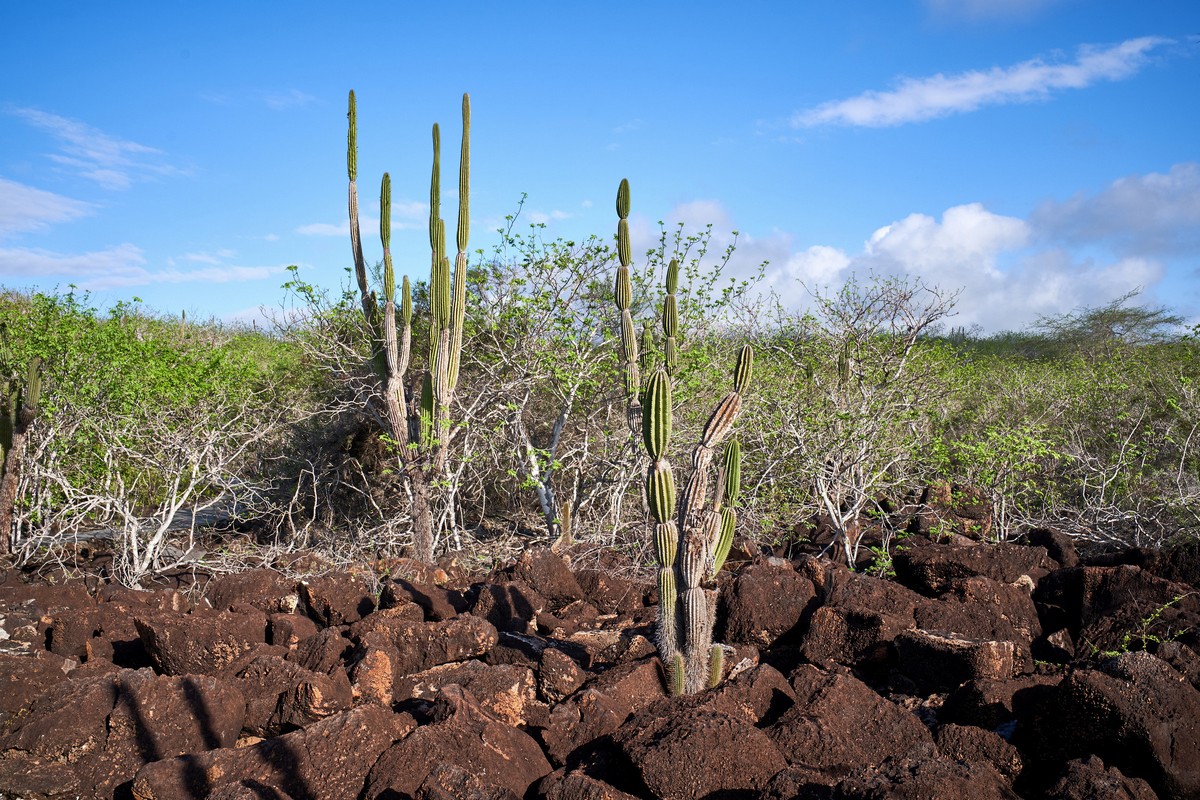
Eh? Surely not. How can lava look all freshly-baked like that a million years after it was deposited here during the eruption? So I turned to the internet – which confirmed the story of our guides! Volcanic activity began around 2.4 million years ago, and ended some 650,000 years ago.
So, how come there’s nothing growing on this here lava – not even moss? How come it appears no erosion has taken place? Is it all due to the climate here? And do the volcanoes here wake up, erupt, spew lava, then go back to sleep again for millennia? Yep, looks like it – and here’s why:
First, the Galápagos Islands themselves appeared (and continue to appear) as a result of active volcanic activity above the Galápagos hotspot; that is, a location where, for some reason, exceptionally hot underground magma comes close to the earth’s surface. And since tectonic plates move around the earth’s surface, the magma punches holes through them one by one as the plates move over it (at a speed of around 3.7cm per year), over millions of years (details – here). You can see the result here on Google Maps:
Oh, and btw: the tectonic plate here moves eastward, and that’s why the volcanoes on the eastern islands were active long ago, while those on the western islands are now active.
And, back to where there’s no vegetation growing on those million-year-old lava bricks. That’s simply due to the inhospitable climate down near sea level. Turns out the ocean currents around the islands are very cold; the resultant climate is very hot and dry: perfect for cactus in places; no good for most anything else. Only higher up a volcano does the climate turn a little moister and things become a little greener.
But it’s not all bad having a dry climate like that. Turns out it helped protect the ecology of the islands from ecology’s worst nightmare: humans.
Folks only started settling here not all that long ago (though the islands were surely visited by the Polynesians during their outings across the Pacific). The Spanish came, and mostly went. The English came, and mostly went. Pirates and whalers – also. Why? It’s so darn dry and barren and parched here! Cactus heaven – yes. Water for your teapot and your porridge of a morning? Nope.
But that’s enough of dry facts ). Time for photos!…
Out we sail.. and our first pics were of seals – who had taken all the available sun-loungers, the devils!
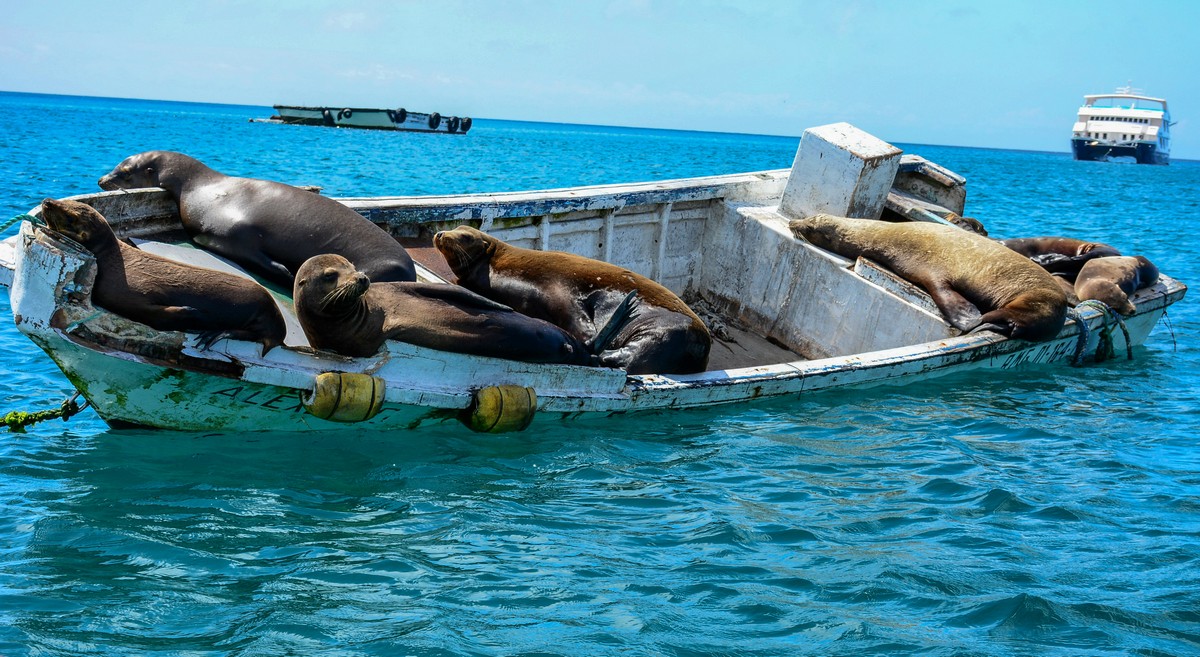
One extra-cheeky one even climbed onto our boat!
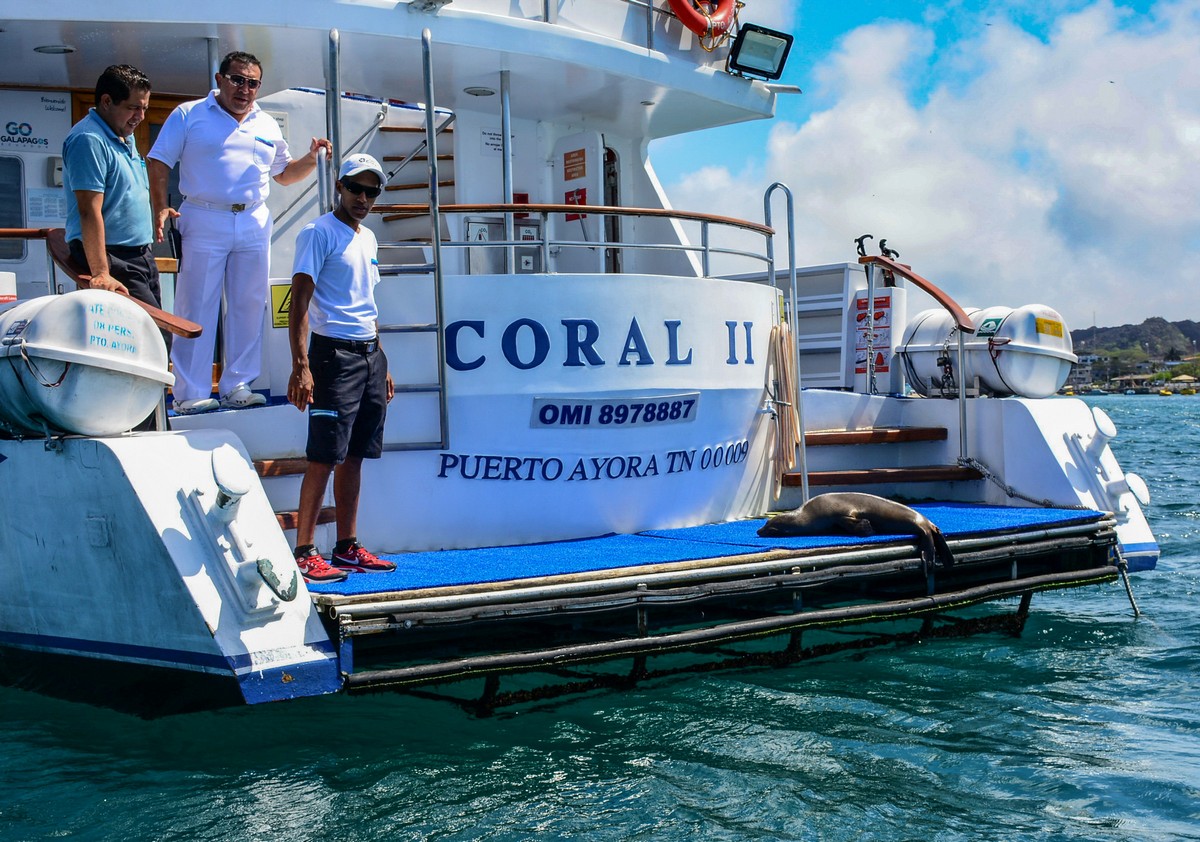
Onward we sail…
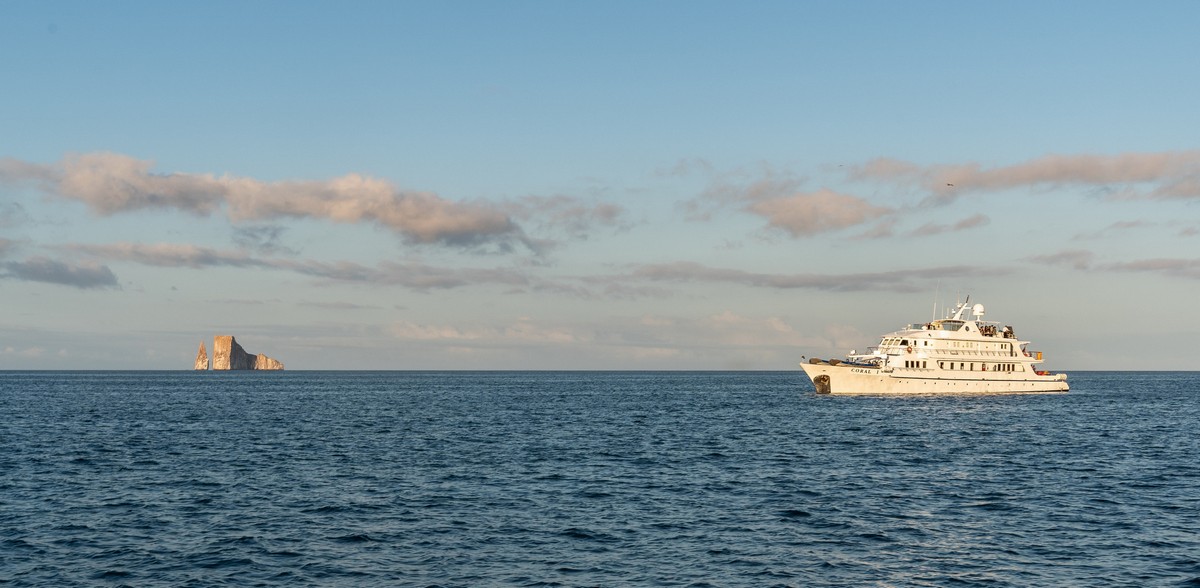
But first a quick announcement…
The photos here aren’t only mine, but also those of my fellow travelers. The pics that aren’t so great – they’ll be mine; the better ones – they’ll mostly be the work of DZ, assisted by heavy duty kit like this bad boy:
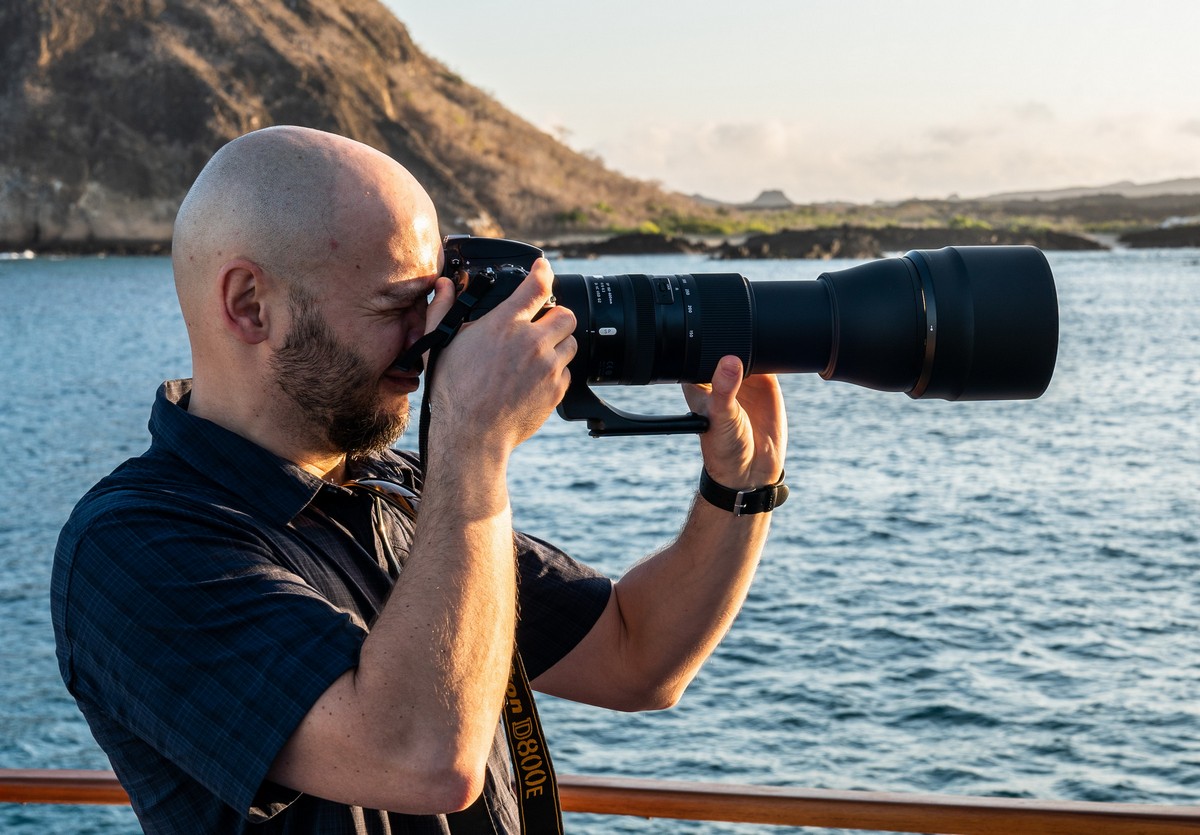
Now for some more detail on the animals that met us on San Cristóbal. In short – Ecuad-awesome! Now I know why Charles Darwin was bowled over by the uniqueness of the fauna here. For indeed, many of the species here are endemic – and by that I mean they can be endemic to a particular island! Not just that, but their overall number runs into the zillions, plus most of them aren’t afraid of humans at all; they just ignore them. Perhaps they’ll turn their heads slowly to see what all the noise is, but that’s about it. The only species that did run off when they saw us were the orange crabs – surely be put down to a survival instinct.
Because the animals are so… indifferent to our species, there’s a very strict rule in place here: no going up to them closer than two meters, and it goes without saying – no feeding them or touching them. And this is strictly enforced. As mentioned, you can’t bring things to the Galápagos that may harm the animals, including food, seeds, or your own animals. With such strict rules, Homo sapiens – thank goodness – haven’t ruined the ecosystem here (like they have done the world over since their appearance on the planet). Back in the 1970s the authorities here stamped out poaching, established strict laws regarding the protection of national parks, and started to control rats, cats and dogs imported by humans, some of which earlier attacked flamingos, while some actually caused a certain species of turtle to go extinct (among other negative consequences).
Fast forward four decades, and all is well. The animals are breeding and no one bothers them; at least – besides pesky tourists with the clickety-clack of their little gadgets:
Here’s olly_ru posing with an iguana. Or is it the other way round? Here’s an iguana posing with olly_ru:
This baby was all on her own. Her mom was at the other end of the beach – fast asleep!
Frigate birds up above followed our boat for ages. Apparently they use the slipstream to glide and glide and glide, or something like that.
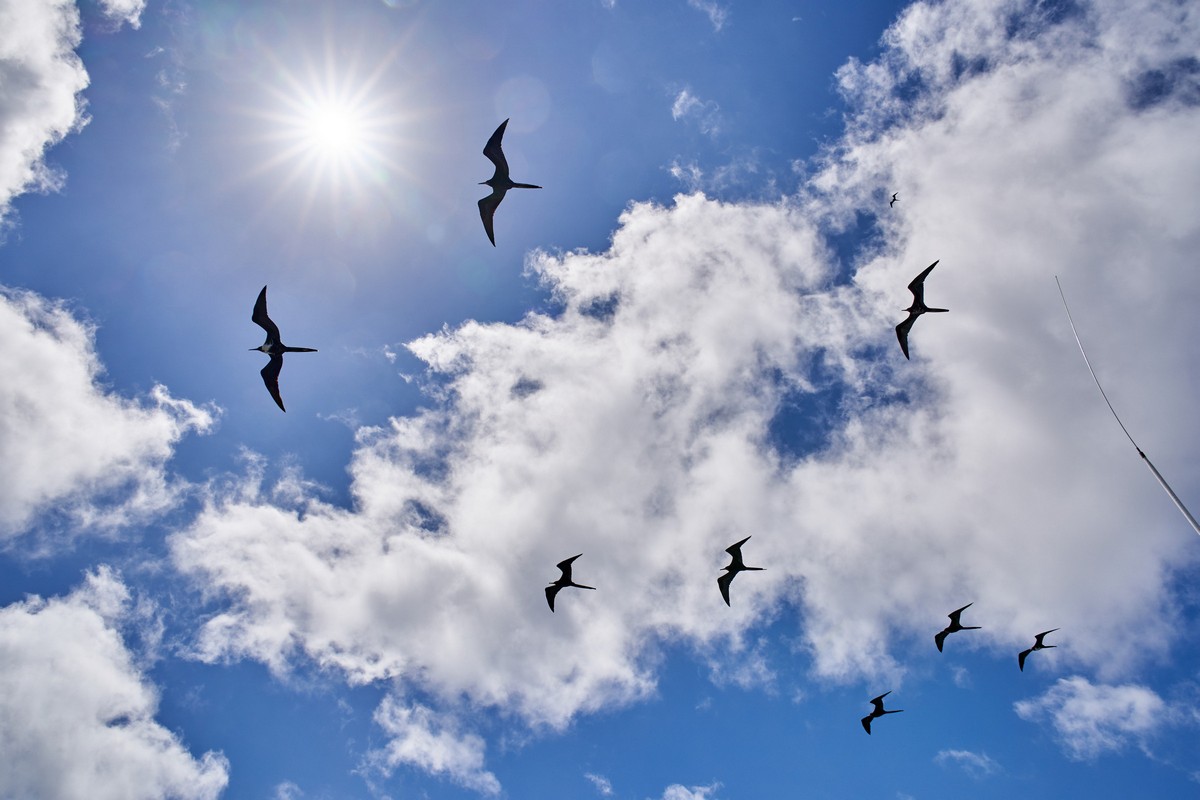
Btw, these pics are from Cerro Brujo on San Cristóbal.
Old lava:
On the horizon – the very volcanoes from where all these ancient lava fields came from:

This fresh-looking lava got me thinking again. Surely it’s not ~650,000 years old? I wonder what will be left of human beings in a million years if mankind were to suddenly disappear. Not much probably, at least on earth. Maybe the kit left on the moon, the International Space Station?… On earth everything would fall to ruin, grass over, leaving not much trace – perhaps besides fossils. I reckon the exception could be the Galápagos. If the lava is preserved so well, maybe the buildings too, due to the dry and comfortable climate.
But, again, I just couldn’t believe all this lava is so old. So I looked it up, and found something that sounds a bit more probable to me – someone who has seen rather a lot of lava around the world. I quote: ‘The latest eruptions were prehistorical in age, but are probably less than 1000 years old’.
Yes! That’s more like it! For a moment I thought I was losing it ).
Well that’s all for today folks. But I’ll be back with more Ecuad-awesomenesses tomorrow. Actually, tomorrow begins an eight-part (!) series on the Galápagos Islands, or should I call them Galápa-gosh Islands! Oh my Galápa-gosh – yes that’s what the series will be called!..
Adios for now folks!…
All the pics from Ecuador are here.



































































